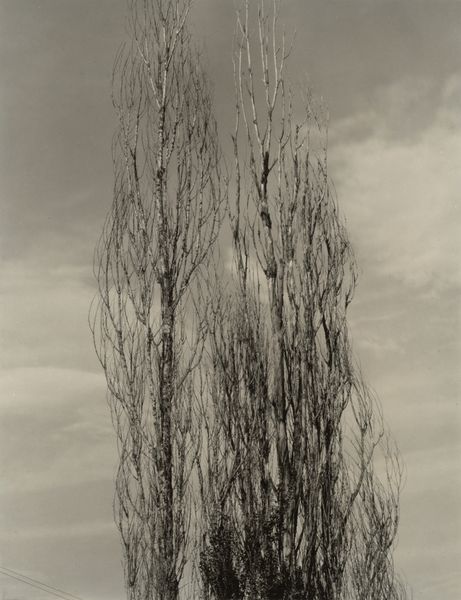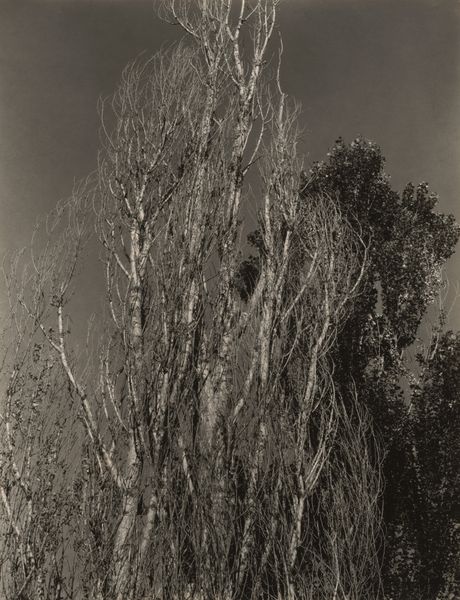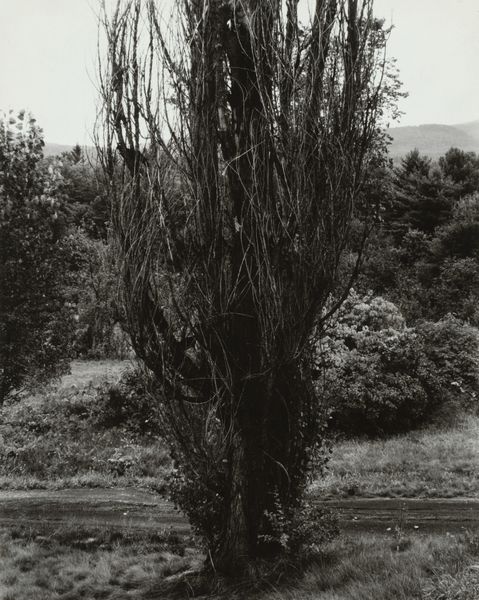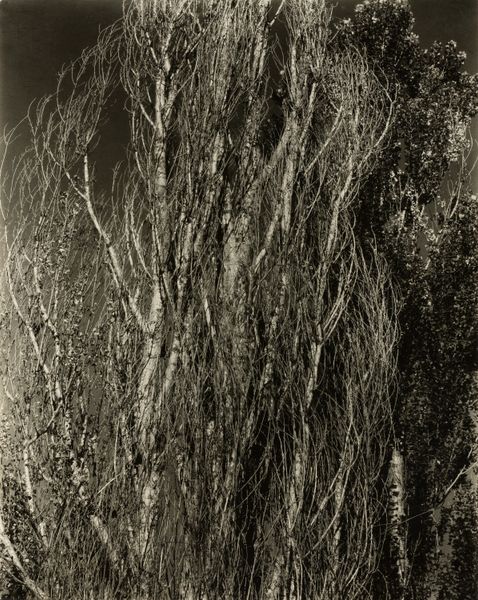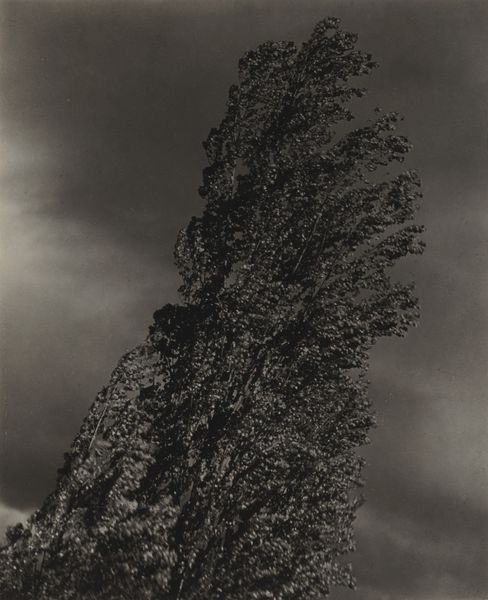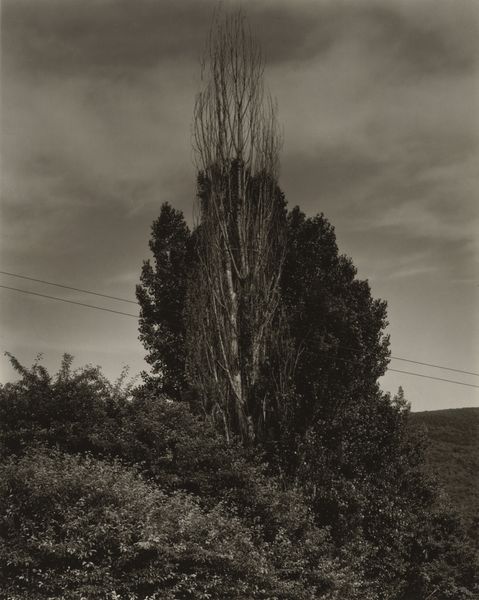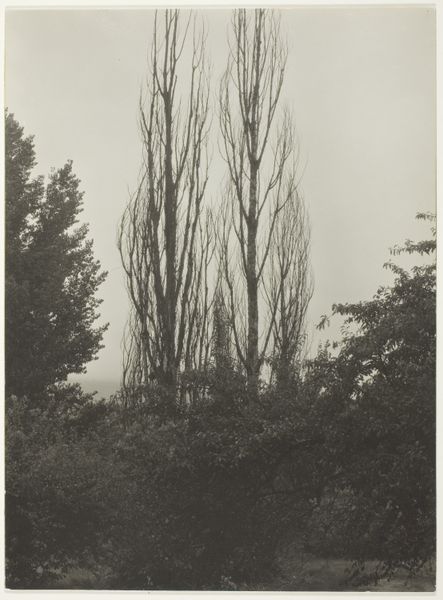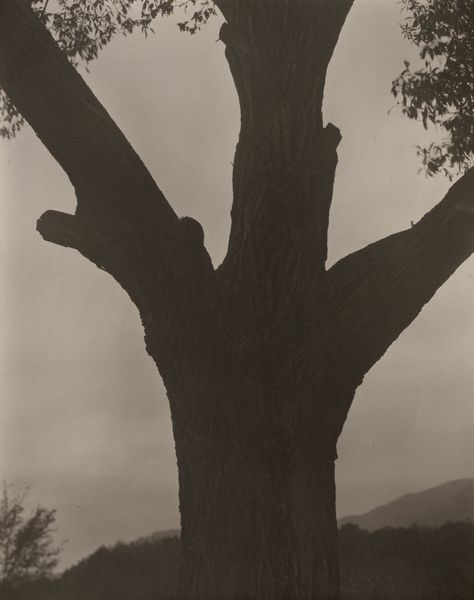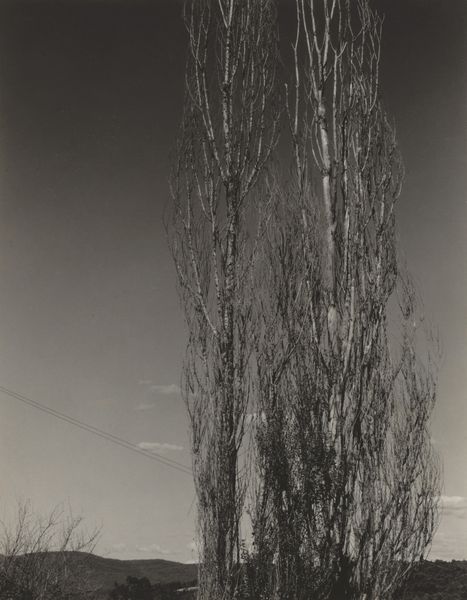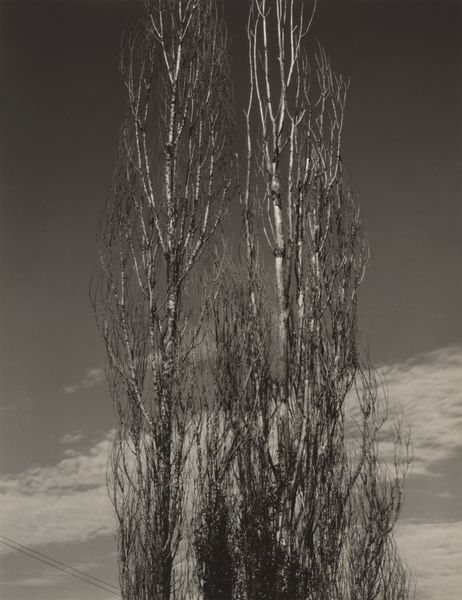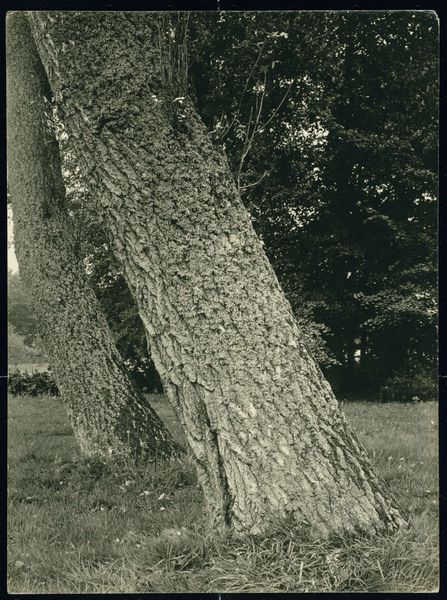
Dimensions: sheet (trimmed to image): 24 × 18.4 cm (9 7/16 × 7 1/4 in.) mount: 50.8 × 38.7 cm (20 × 15 1/4 in.)
Copyright: National Gallery of Art: CC0 1.0
Curator: Good morning. We’re standing before Alfred Stieglitz’s 1936 gelatin silver print, “Poplars—Lake George." Editor: The immediate impression is one of stillness, yet also incredible detail, like looking at the veins of a leaf blown up to tree size. A real chiaroscuro mood, almost romantic, don’t you think? Curator: Indeed. And what's fascinating is Stieglitz's devotion to natural form. He often spoke of finding a direct connection with the object of his photography. Editor: Do you mean through the darkroom process, or choice of subject? Silver gelatin printing requires a good grasp of chemistry and a darkroom setting with tools, trays, and safelights. These choices of technology must've colored the subject. Curator: I’d say it was both. The choice of poplar, the way he captures the almost skeletal structure of the tree…it seems intensely personal, reflective of the inner self projected onto the landscape. The means are essential, certainly. Editor: Right, let's consider how a gelatin silver print renders details so sharply. It shows every nook and cranny of the bark. A more industrial process gives a completely different feel. Is that mirroring or finding the truth in those stark details, as the man behind the lens attempts to show it? Curator: I suspect it's both at play here. Consider how this relates to Stieglitz's Pictorialist roots: manipulating the photographic image to evoke feeling. The way the monochrome palette intensifies the texture...he finds abstraction in the real. Editor: Sure, manipulating the material…using his photographic materials in a unique way, playing with light, choosing printing surfaces and tools... all in that quest of abstraction in the real as a key to truth and the role of representation. Curator: He seeks meaning by imprinting his soul upon this physical subject. It also reveals the shift within modernism at the time, the search to find essence. Editor: So the artist's labor shapes both his subjects and our vision, by the chemical interactions to physical interventions of process: truly captivating to trace materiality. Curator: It truly is! Stieglitz wanted us to see and feel what he did...to consider nature’s power. Editor: And what he put into making an industrial process echo feeling. A beautiful example of intention turned real, wouldn't you say?
Comments
No comments
Be the first to comment and join the conversation on the ultimate creative platform.
